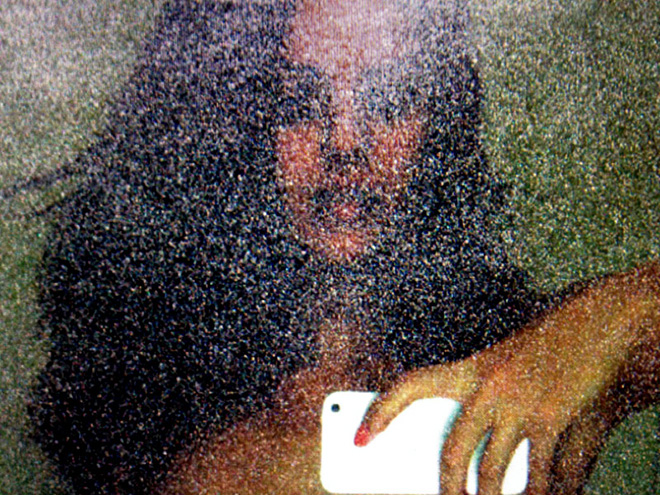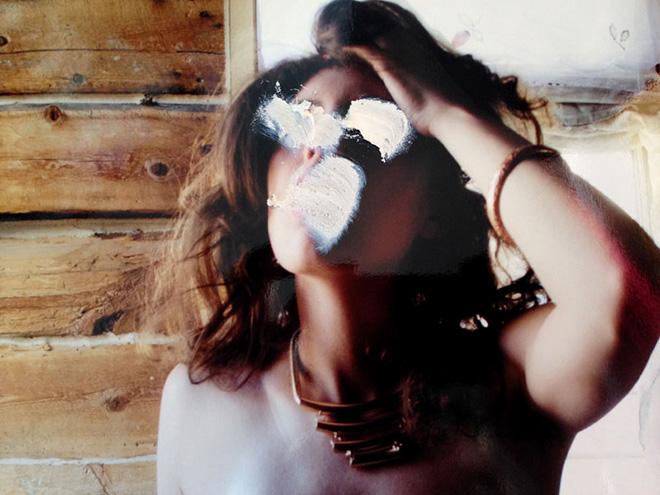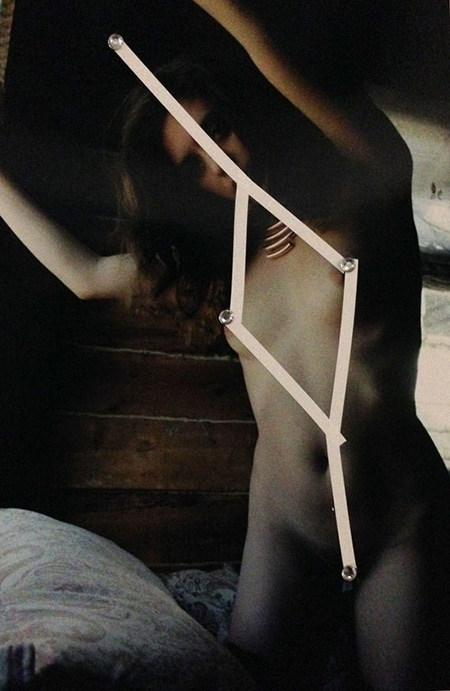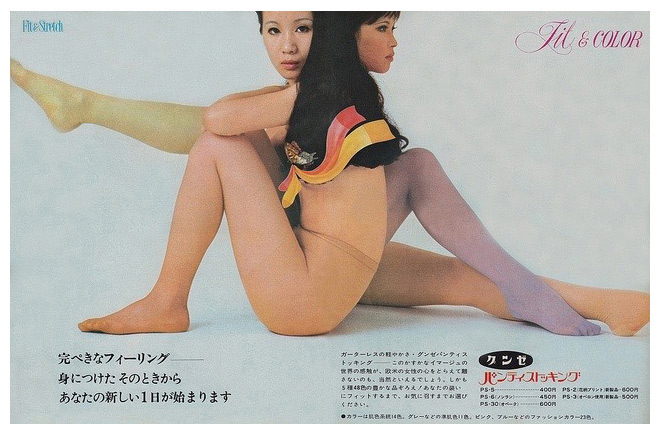visual design

Evolutionarily minded researchers have hypothesized that women advertise their ovulatory status by wearing red or pink, but many of these studies have been based on relatively small samples of women who have self-reported their clothing choices, an unorthodox practice in the biological study of coloration. […] We found no evidence that women are particularly inclined to wear red or pink during peak fertility.
{ PsyArXiv | Continue reading }
related { our meta-analyses help synthesize the evidence that red enhances perceived attractiveness in romantic contexts }
colors, relationships | November 21st, 2018 3:19 pm
airports and planes, visual design | February 14th, 2018 12:08 pm

Grapheme-color synesthesia is a neurological phenomenon in which viewing a grapheme elicits an additional, automatic, and consistent sensation of color.
Color-to-letter associations in synesthesia are interesting in their own right, but also offer an opportunity to examine relationships between visual, acoustic, and semantic aspects of language. […]
Numerous studies have reported that for English-speaking synesthetes, “A” tends to be colored red more often than predicted by chance, and several explanatory factors have been proposed that could explain this association.
Using a five-language dataset (native English, Dutch, Spanish, Japanese, and Korean speakers), we compare the predictions made by each explanatory factor, and show that only an ordinal explanation makes consistent predictions across all five languages, suggesting that the English “A” is red because the first grapheme of a synesthete’s alphabet or syllabary tends to be associated with red.
We propose that the relationship between the first grapheme and the color red is an association between an unusually-distinct ordinal position (”first”) and an unusually-distinct color (red).
{ Cortex | Continue reading }
A Black, E white, I red, U green, O blue: vowels,
Someday I shall tell of your mysterious births
{ Arthur Rimbaud | Continue reading }
art { Roland Cat, The pupils of their eyes, 1985 }
Linguistics, colors, neurosciences | February 12th, 2018 1:27 pm

collage { John Stezaker, Untitled (Photoroman), 1977 and The word made flesh lll (Photoroman), 1977-78 }
visual design | January 4th, 2018 2:36 pm

Brothers Vincenzo and Giacomo Barbato named their clothing brand “Steve Jobs” in 2012 after learning that Apple had not trademarked his name. […]
The Barbatos designed a logo that resembles Apple’s own, choosing the letter “J” with a bite taken out of the side. Apple, of course, sued the two brothers for using Jobs’ name and a logo that mimics the Apple logo. In 2014, the European Union’s Intellectual Property Office ruled in favor of the Barbatos and rejected Apple’s trademark opposition. […]
While the Barbatos currently produce bags, t-shirts, jeans, and other clothing and fashion items […] they plan to produce electronic devices under the Steve Jobs brand.
{ Mac Rumors | Continue reading }
art { Left: Ellsworth Kelly, Nine Squares, 1977 | Right: Damien Hirst, Myristyl Acetate, 2005 }
economics, halves-pairs, law, marketing, technology | December 29th, 2017 4:11 am
art, halves-pairs | December 9th, 2016 4:11 pm

Google Brain has created two artificial intelligences that evolved their own cryptographic algorithm to protect their messages from a third AI, which was trying to evolve its own method to crack the AI-generated crypto. The study was a success: the first two AIs learnt how to communicate securely from scratch.
{ Ars Technica | Continue reading }
images { American Apparel ad, Vice magazine, 2008 | Richard Prince, Untitled, 2012-14 }
unrelated { This Year, You Can Wear A ‘Vagina Mask’ For Halloween | Thanks Tim }
halves-pairs, technology | October 28th, 2016 10:11 am
U.S., visual design | June 16th, 2016 11:40 am
economics, sport, visual design | April 25th, 2016 11:38 am

Piper Jaffray analyst Stan Meyers said animated films generally cost about $100 million to make, as well as an additional $150 million to promote.
An executive producer who wants to drastically cut costs traditionally has two choices: water and hair. Those are the most expensive things to replicate accurately via animation. It’s no mistake that the characters in Minions, the most profitable movie ever made by Universal, are virtually bald and don’t seem to spend much time in the ocean.
{ Bloomberg | Continue reading }
economics, hair, showbiz, visual design, water | March 21st, 2016 6:35 am
art, visual design | March 1st, 2016 1:50 pm

…the immaculate ultrawhite behind the French doors of a new GE Café Series refrigerator […] the white hood of a 50th anniversary Ford Mustang GT […] the white used to brighten the pages of new Bibles, the hulls of super yachts, the snowy filling inside Oreo cookies […]
All this whiteness is the product of a compound known as titanium dioxide, or TiO2. A naturally occurring oxide, TiO2 is generally extracted from ilmenite ore and was first used as a pigment in the 19th century. In the 1940s chemists at DuPont refined the process until they hit on what’s widely considered a superior form of “titanium white,” which has been used in cosmetics and plastics and to whiten the chalked lines on tennis courts. DuPont has built its titanium dioxide into a $2.6 billion business, which it spun off as part of chemicals company Chemours, in Wilmington, Del., last fall.
A handful of other companies produce TiO2, including Kronos Worldwide in Dallas and Tronox of Stamford, Conn. Chemours and these others will churn out more than 5 million tons of TiO2 powder in 2016. China also produces large amounts of the pigment, and its industries consume about a quarter of the world’s supply. Most of China’s TiO2 plants, however, use a less efficient and more hazardous process than the one developed at DuPont. Starting in the 1990s, if not earlier, China’s government and Chinese state-run businesses began seeking ways to adopt DuPont’s methods. Only they didn’t approach the company to make a formal deal. According to U.S. law enforcement officials, they set out to rip off DuPont.
“At first, you’re like: Why are they stealing the color white?” says Dean Chappell, acting section chief of counterespionage for the FBI.
{ Bloomberg | Continue reading }
oil on wood { Ellsworth Kelly, White Plaque: Bridge Arch and Reflection, 1951-55 }
U.S., asia, colors, economics, spy & security | February 8th, 2016 6:58 am

{ They’re probably the most familiar interfaces on the planet: the numeric keypads on our mobile phones and calculators. Yet very few notice that the keypads’ design has remained unchanged for nearly half a century. + Most users do not notice that the keypads of the calculator and phone are inversions of each other. | full story }
visual design | January 13th, 2016 1:56 pm

In 2012, a genetic analysis confirmed that Concetta’s enhanced color vision can be explained by a genetic quirk that causes her eyes to produce four types of cone cells, instead of the regular three which underpin colour vision in most humans. […]
Women with four cone types in their retinas are actually more common than we think. Researchers estimate that they represent as much as 12% of the female population. […] A woman has the potential to produce four cone types because she inherits two X-chromosomes. […]
The three cone types that most of us have in our retinas allow us to see millions of colours. Each cone’s membrane is packed with molecules, called opsins, which absorb lights of some wavelengths and cause the cone to send electrical signals to the brain. […]
Four cones don’t automatically grant you superior color vision. […] Only one of the seven women with four cones behaved as if she actually perceived differences between the colour mixtures that were invisible to everyone apart from her sons.
{ The Neurosphere | Continue reading }
colors, eyes, genes | December 22nd, 2015 10:31 am
colors, hair | July 18th, 2015 5:11 am
haha, visual design | July 15th, 2015 4:46 am
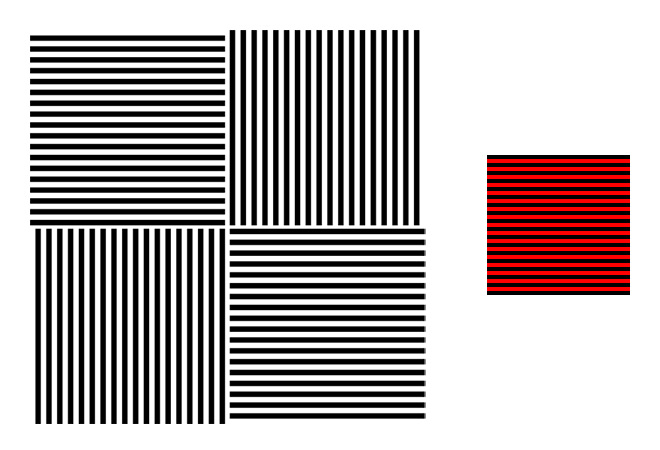
The McCollough effect is a phenomenon of human visual perception in which colorless gratings appear colored contingent on the orientation of the gratings. It is an aftereffect requiring a period of induction to produce it. For example, if someone alternately looks at a red horizontal grating and a green vertical grating for a few minutes, a black-and-white horizontal grating will then look greenish and a black-and-white vertical grating will then look pinkish. The effect is remarkable for often lasting an hour or more, and in some cases after prolonged exposure to the grids, the effect can last up to three and a half months
{ Wikipedia | Continue reading | via Brad Weslake }
eyes, visual design | May 12th, 2015 2:02 am

Of the total materials that flow through the U.S.’s production and distribution processes every day, 99% will be waste within six months. Half of the food produced in the U.S. is thrown out, two thirds of that before it even reaches the point of consumption. In a real, material sense, capitalism doesn’t produce goods nearly so much as it produces trash.
{ The New Inquiry | Continue reading }
economics, visual design | May 7th, 2015 11:09 am

{ yatzer | Thanks Tim! }
visual design | April 13th, 2015 2:00 am
marketing, visual design | March 18th, 2015 3:14 pm










